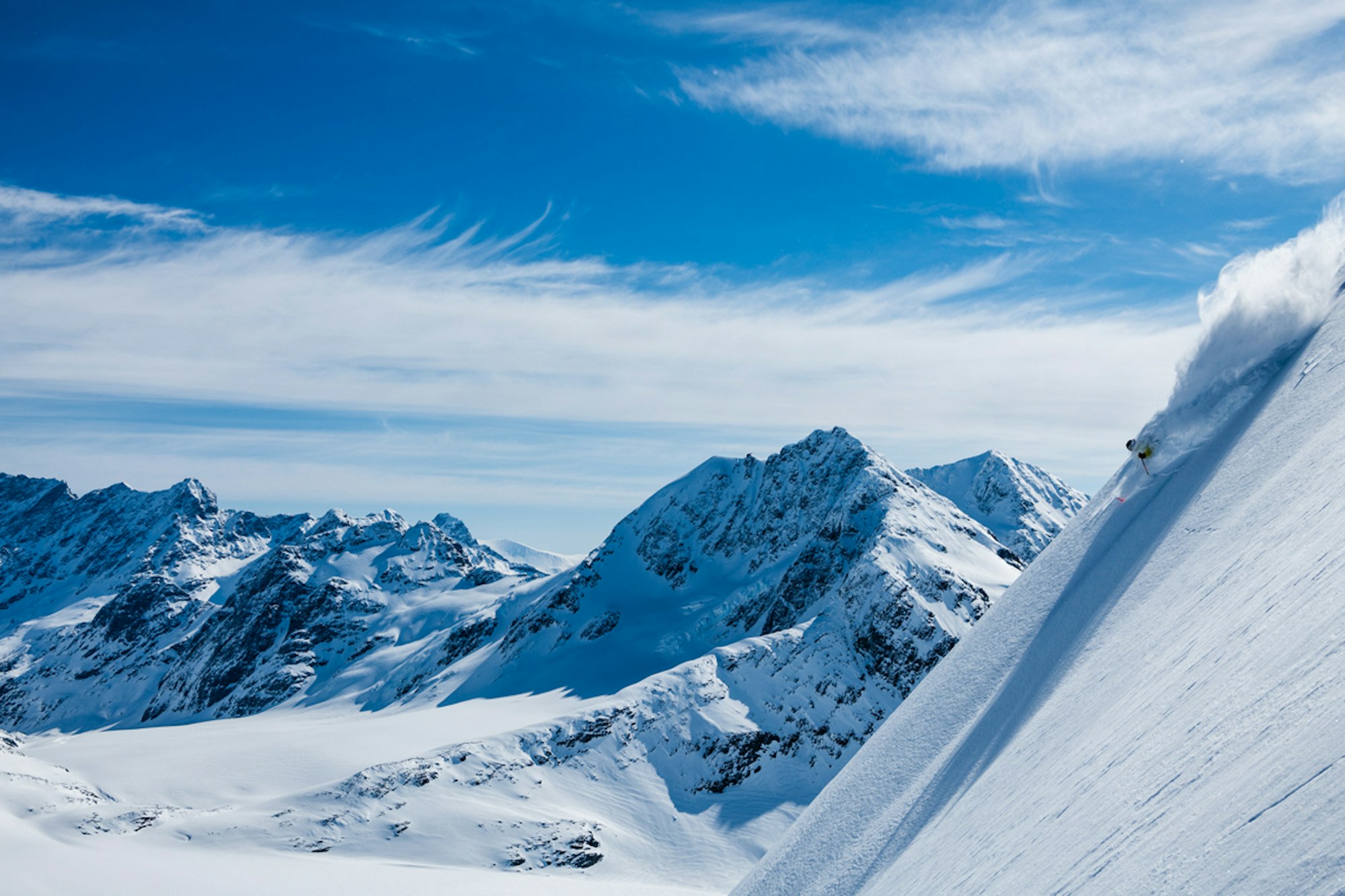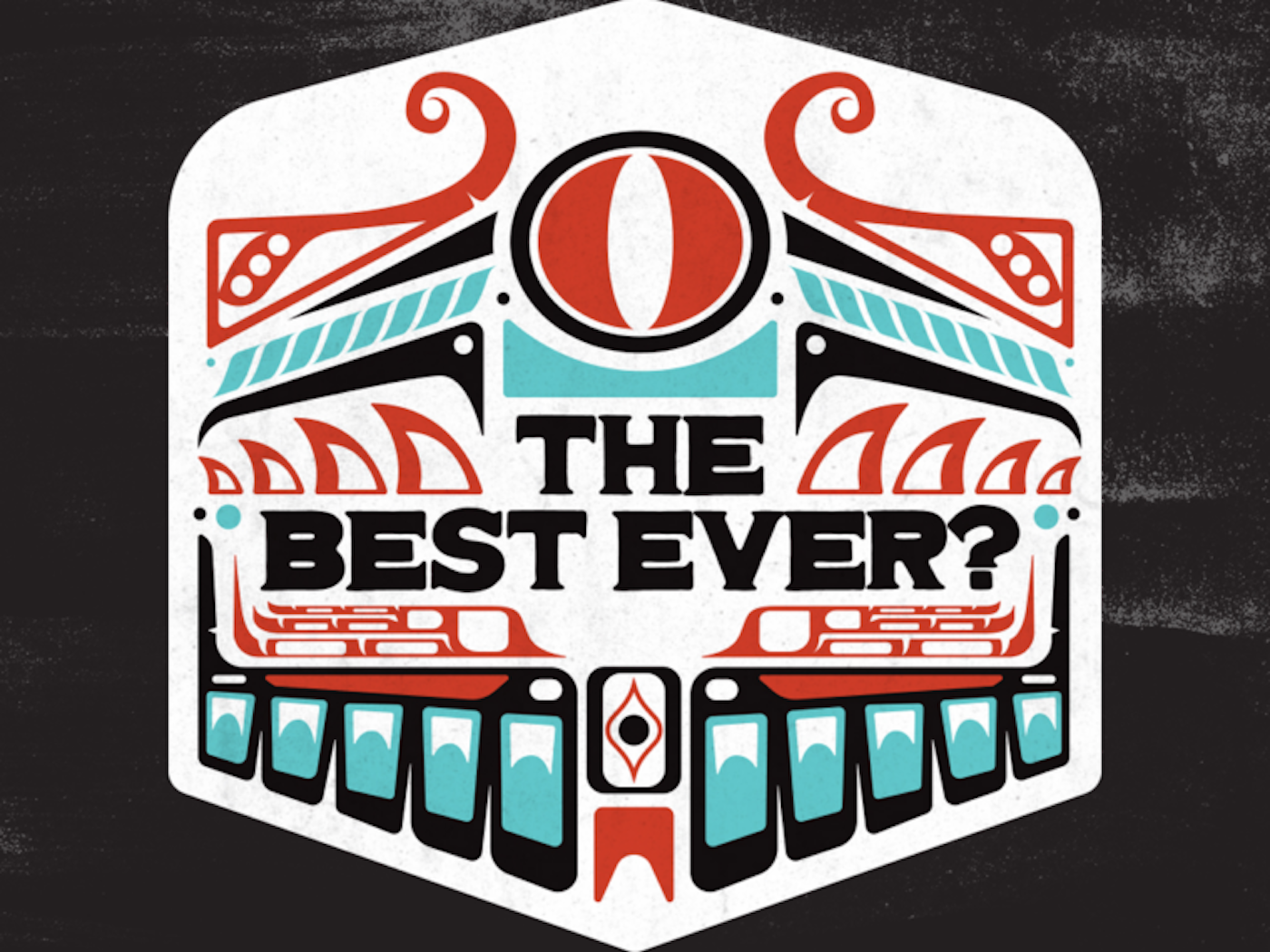
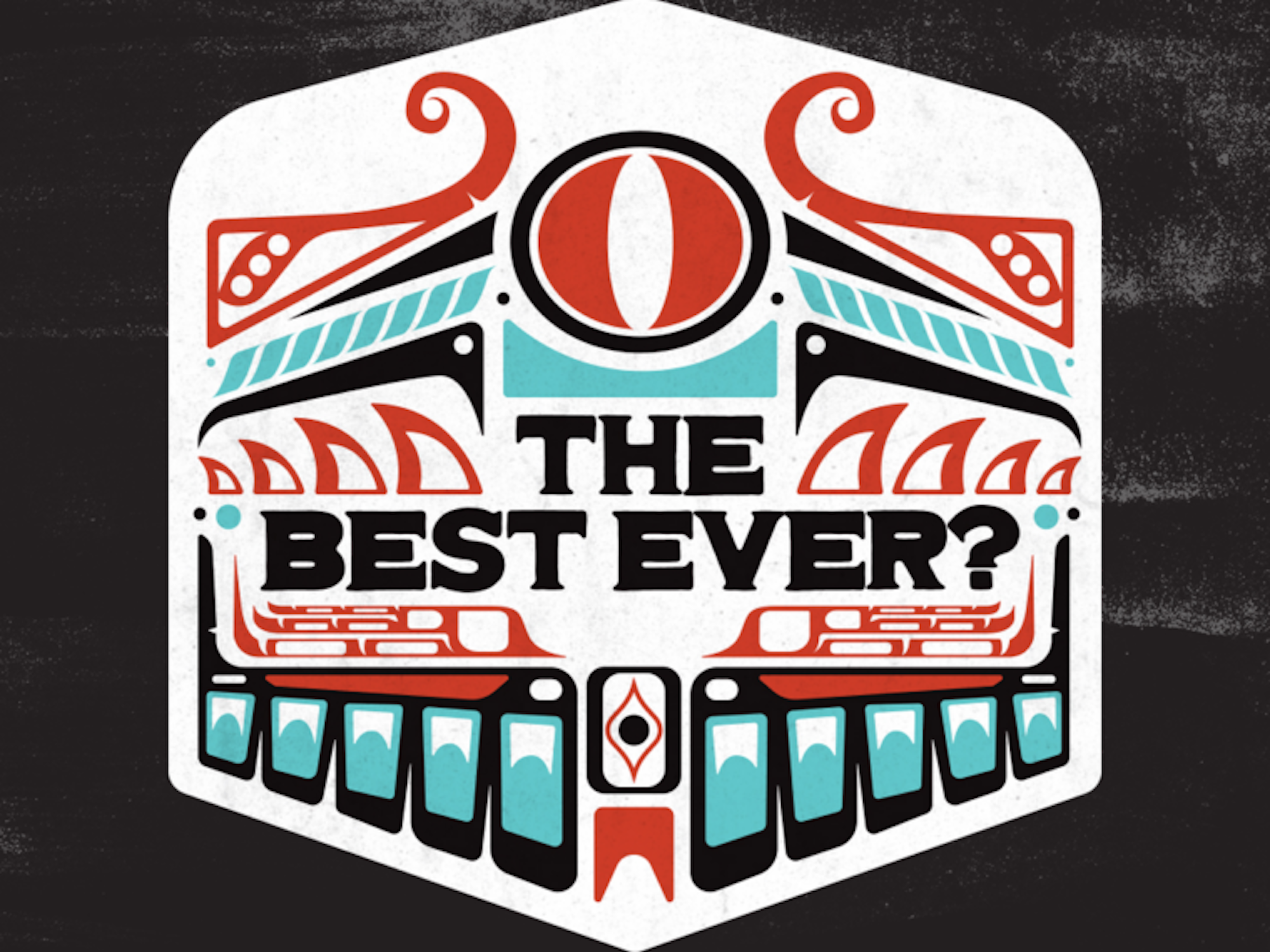
In a world of superlatives like heli-skiing, can there really be a top gun? There’s only one way to find out
WORDS • LESLIE ANTHONY | PHOTOS • MATTIAS FREDRIKSSON
On a bluebird day in April, breakfast ends early; there will be no second round of bacon today. With an all-clear to fly until sometime that afternoon when the next Pacific storm front is due to roll through, everyone is pumped as they depart the table for their cabins scattered around the grounds of historic Tweedsmuir Park Lodge. Soon, six groups of four, each with a guide, have assembled at three flagged landing areas on the lawn in front of the lodge, and the whup-whup of rotor wash echoes from the valley’s towering, rocky walls. It’s go time at Bella Coola Heli Sports (BCHS), 40 minutes outside the eponymous coastal British Columbia town.
We start the day on short, stepping-stone pillows just a five-minute flight from the lodge, then move gradually into the deepness of the alpine to ski long, languishing glaciers and the ridges that cradle them. Eventually, we drop over a massive rampart into a glacier-scoured valley where the scalloped edge of a forest traces the invisible shoreline of an extinct lake. Landing on a large knob that gives us an overlook of the massive and heavily fractured Jacobsen’s Glacier, we ski shin-deep powder on a 100,000-year-old base with apartment blocks of ice tumbling to our left. It’s fast snow at a good angle and a seemingly never-ending run to the lake bed.
The helicopter bumps us back up to the knob, but before our next run down the glacier, I stare out toward a sea of peaks to the south and recall the short, hour-long morning plane ride from Vancouver. Gazing out a window, an unobstructed view of the Monarch Ice Cap had revealed a torture of mountains and valleys seemingly swirling in every direction. At its center, ice stretched between peaks like a sheet pulled taut on a giant bed, tormented glaciers rippling at its corners like scrunched blankets. And now we were standing at the ice cap’s very surreal edge. But it was what I couldn’t see that was perhaps more interesting.
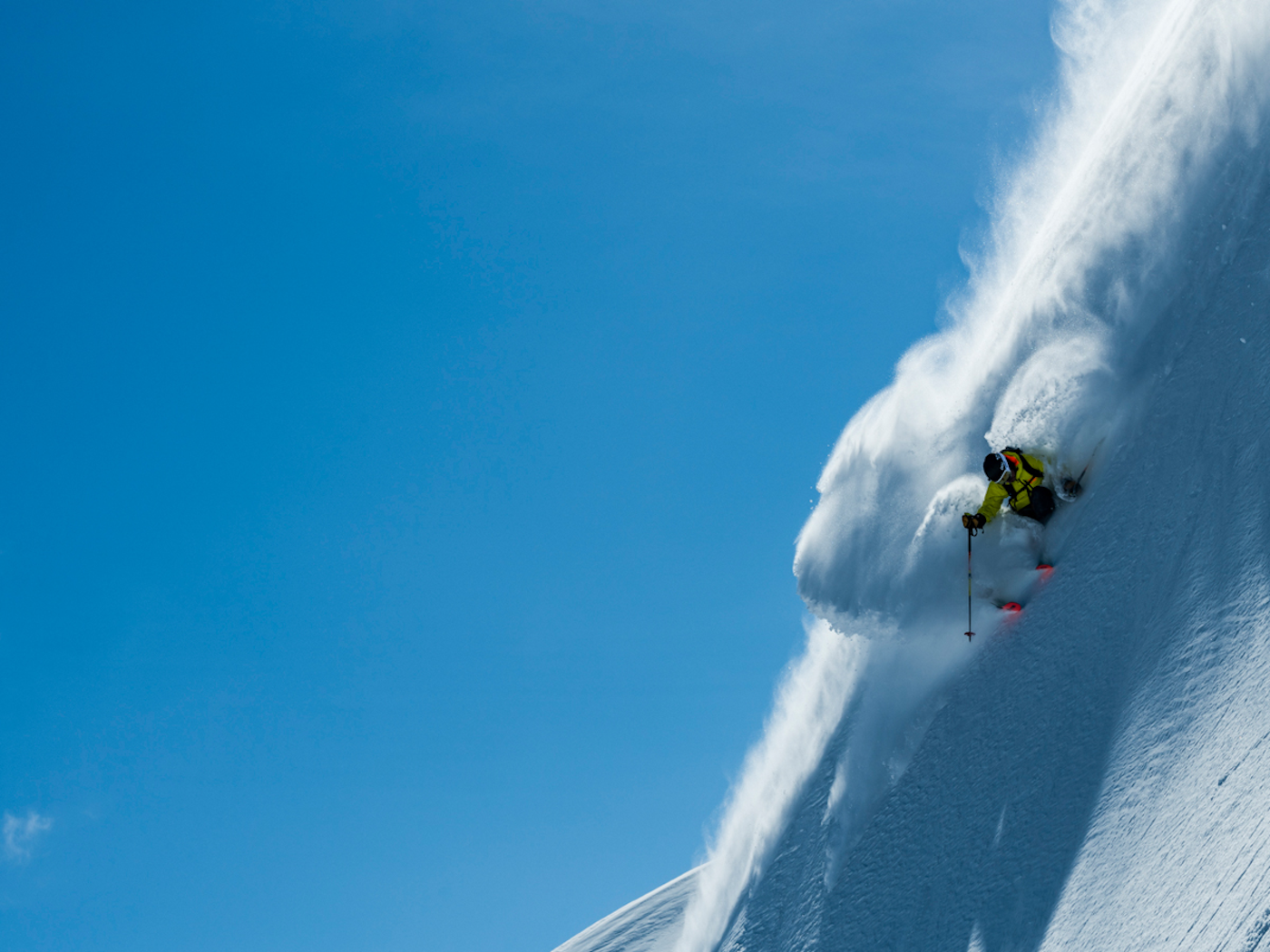
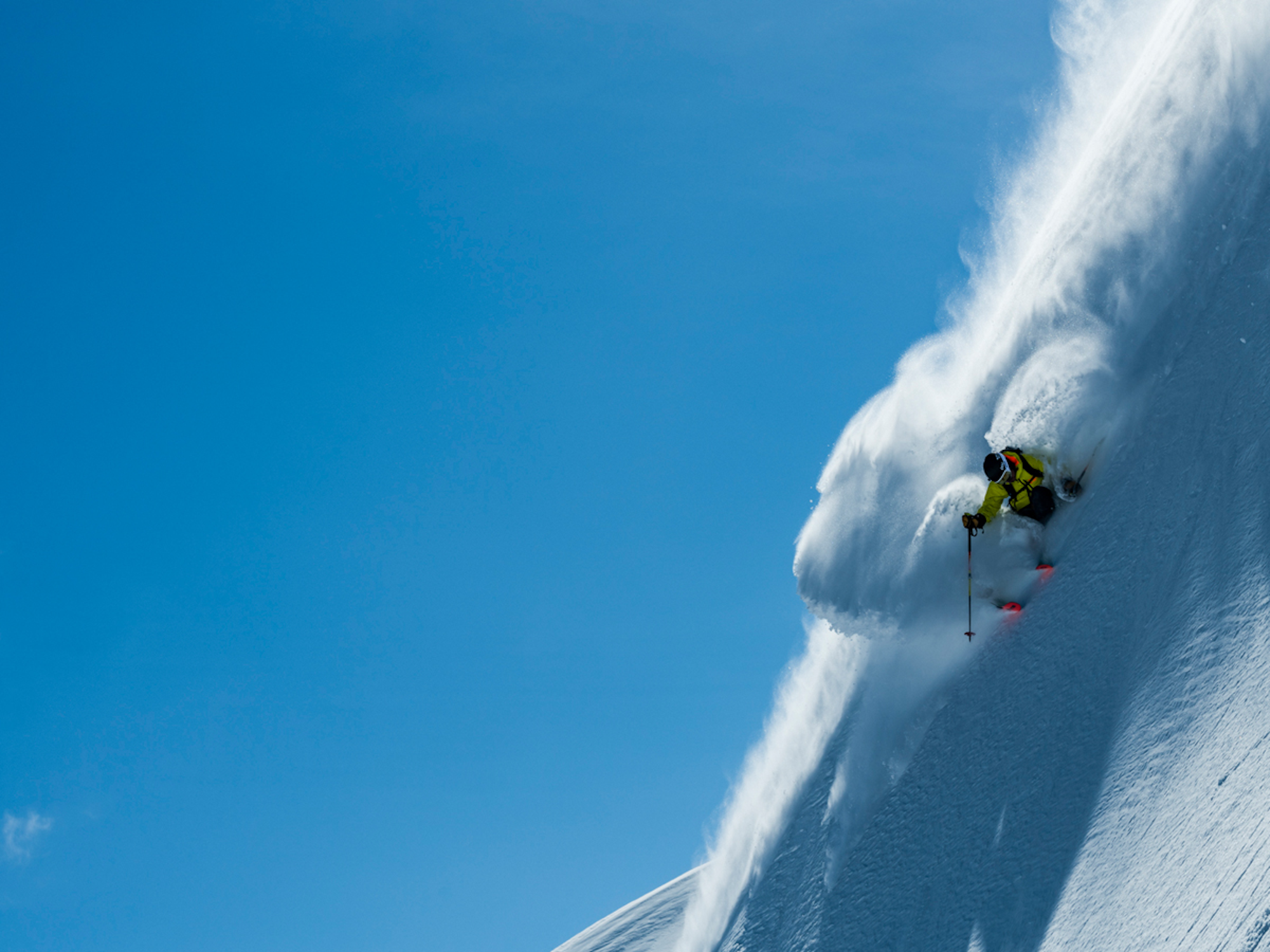
SKIER: Marcus Caston
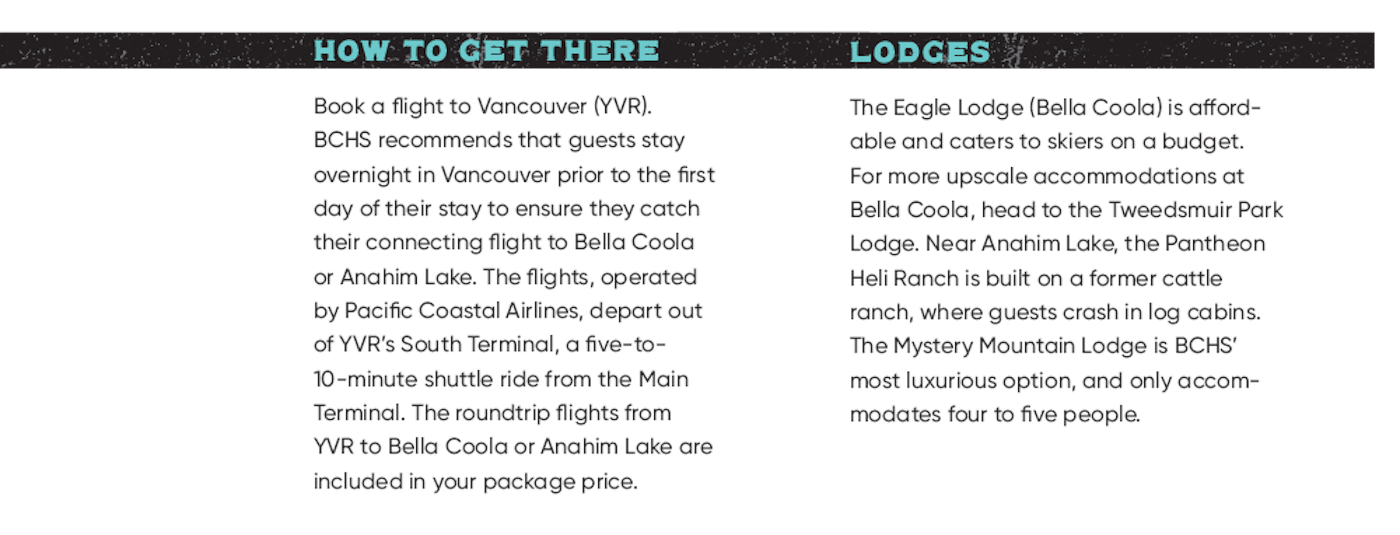
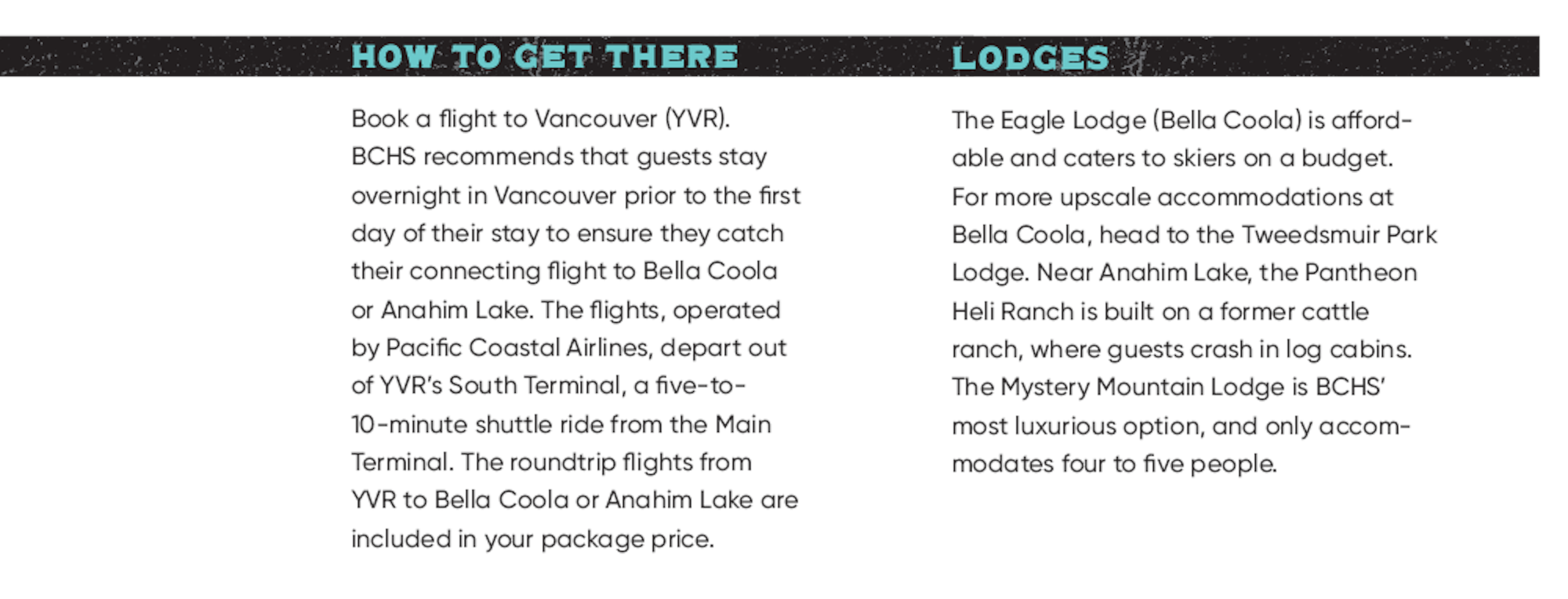
Out there somewhere was the Pantheon Range surrounding Mount Waddington, B.C.’s highest peak at 4,019 meters, where films like Seven Years in Tibet and K2 were shot. In that area, the vistas are so mind-boggling, the mountains and glaciers so Himalayan in scope, that they made where we now stood seem like foothills. And BCHS had a second base out there—Pantheon Heli Ranch—that delivered small-group heli-skiing from the rustic luxury of a working cattle ranch, with western-style hospitality and an enormity of unexplored terrain.
Not that where we stood wasn’t more than enough to deal with. As with Pantheon, first descents lurked on every horizon in the netherworld of ice and snow and rock. Naming runs here becomes part of the plot; you not only experience ski history—you help write it.
High-fiving ensues as we argue about potential names after each run. Every skier is having the time of their lives, but the extra loud, overly talkative group that I’m with seems particularly excited. And with good reason: this vast, enchanting terrain is theirs, so to speak. For the founders and owners of BCHS, this is but one corner of an astonishing 2.64-million-acre tenure that includes some of the most badass heli-skiing on the planet. The infamous trio of Christian Begin, Beat Steiner and Pete “The Swede” Mattsson are not only enjoying an infrequent day of skiing together but also celebrating a recent bestowing of “World’s Best Heli-Ski Operation” by the World Ski Awards—a global initiative to recognize, reward and celebrate excellence in ski tourism.
What’s not to be excited about?
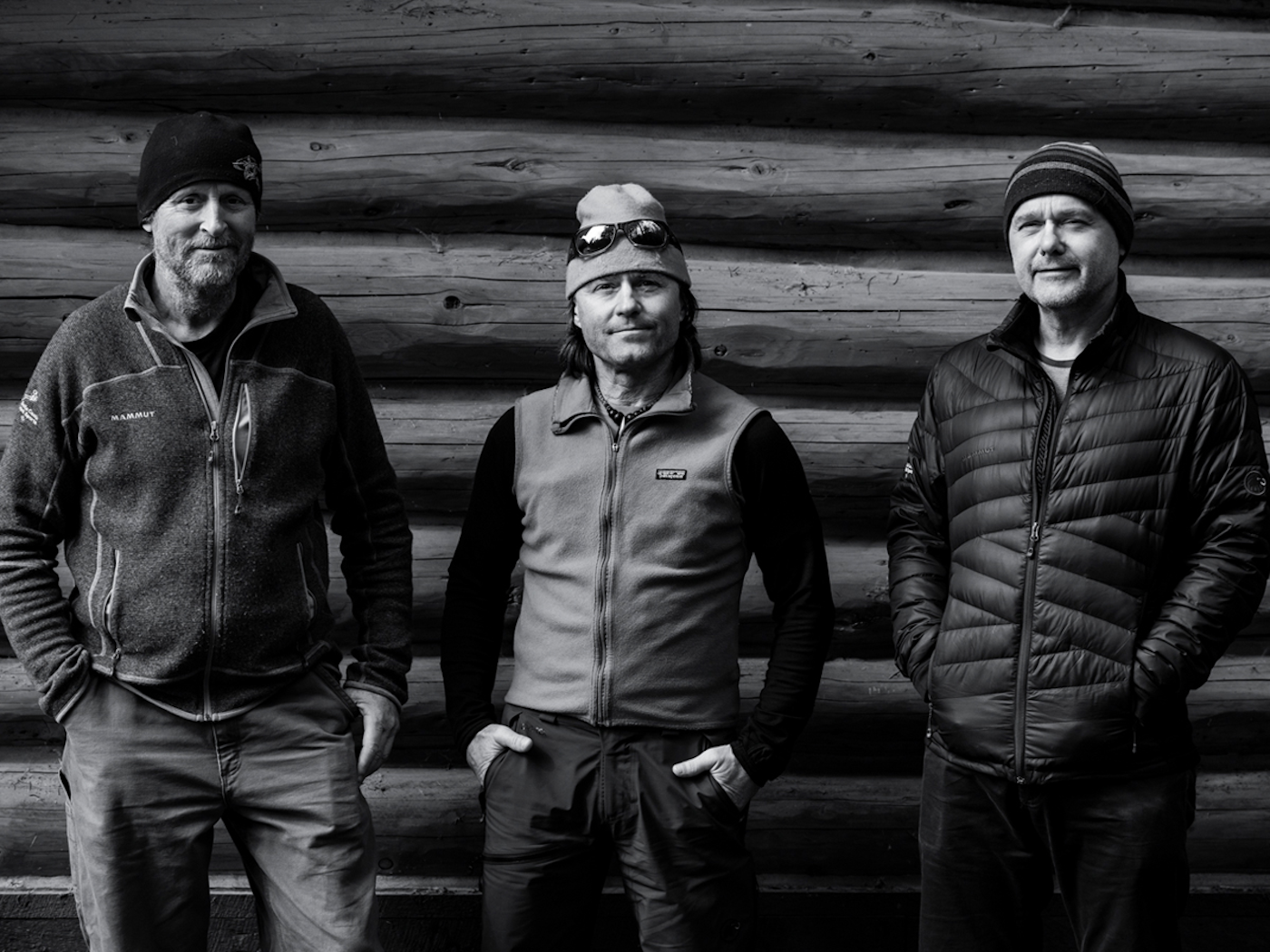
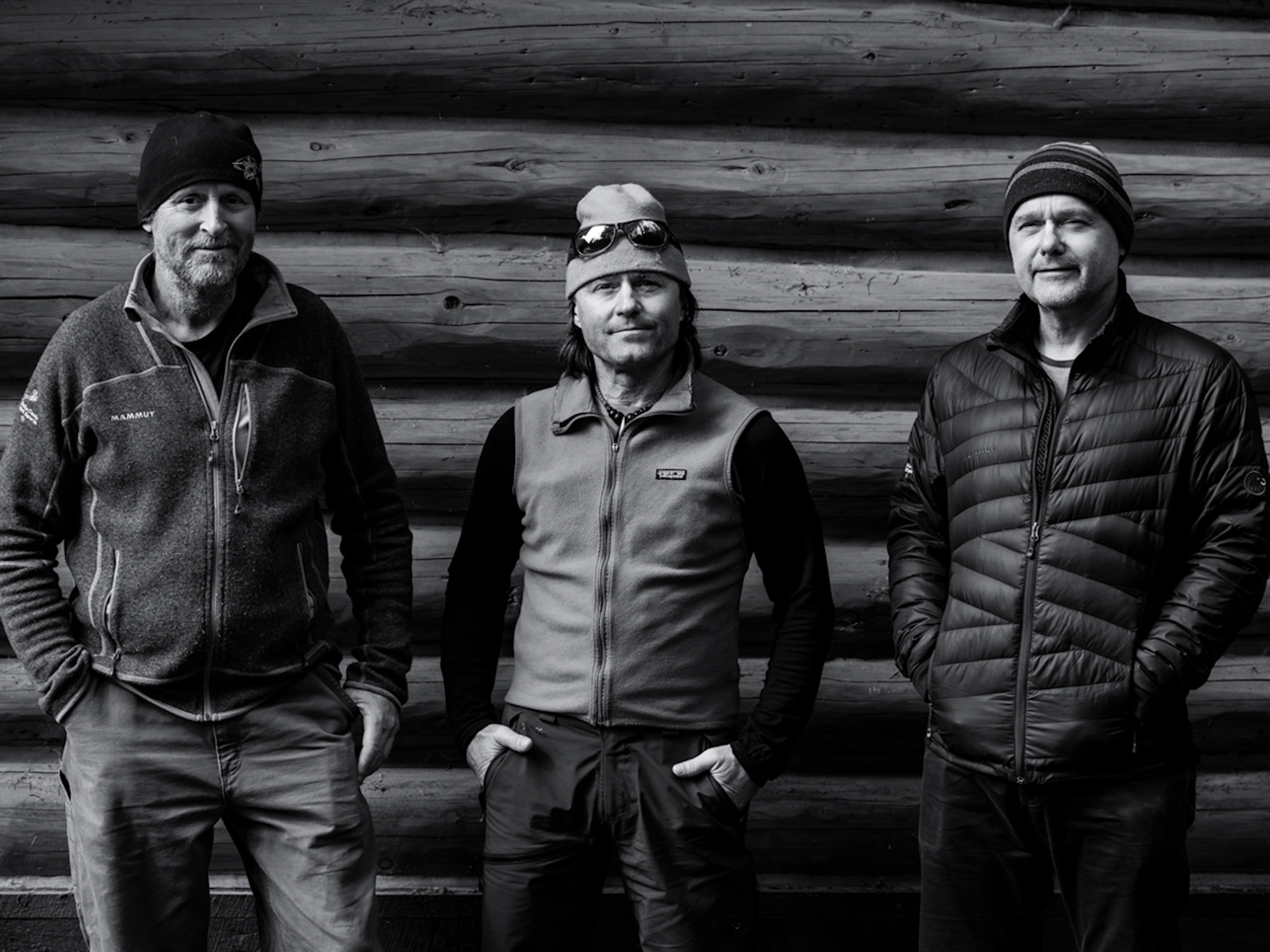
The founders of Bella Coola Heli Sports: Peter “The Swede” Mattsson, Christian Begin and Beat Steiner. Photographed in Bella Coola’s Tweedsmuir Lodge.
Accolades like that don’t come every day. And 18 years of slogging it out in the heli trenches hasn’t exactly been a holiday for the three amigos who forged their longstanding friendship in the active outdoor filmmaking industry around Whistler.
Begin and Steiner were both cinematographers with a string of high-profile movie credits for Adventurescope, Warren Miller, Greg Stump, Radical Films and the National Film Board of Canada, while The Swede served as guide and safety coordinator for many of their backcountry shoots. In the Whistler media circus of the late 1990s, the boys often found themselves competing for local or easily accessible terrain with a revolving door of other film crews, and so they started to talk about finding a less crowded venue. The Swede had previously been to Bella Coola to hike, climb and generally scout out intriguing areas on a map; during that trip he’d found big mountains, huge vertical and a deep, stable coastal snowpack of up to 30 meters annually. That sounded good enough to Begin and Steiner, and it turned out that West Coast Helicopters—with a solid reputation and the right machines—was just installing a new working base at the airport there. With choppers available, the boys made a deal with the owner of a funky 1920s hunting and fishing lodge that did no business outside of summer: they would pay him a fee for every head they brought in.
When they first started working up there in 2000, the freeski revolution was in full swing, and a string of industry clients made BCHS’ decidedly steep and deep terrain their brand, as if some new cosmic big-mountain tap had gushed open beside the well-known trickles of Alaska and Europe. The world’s top snow sport photographers beelined to Bella Coola, and imagery from a new nirvana circled the globe.
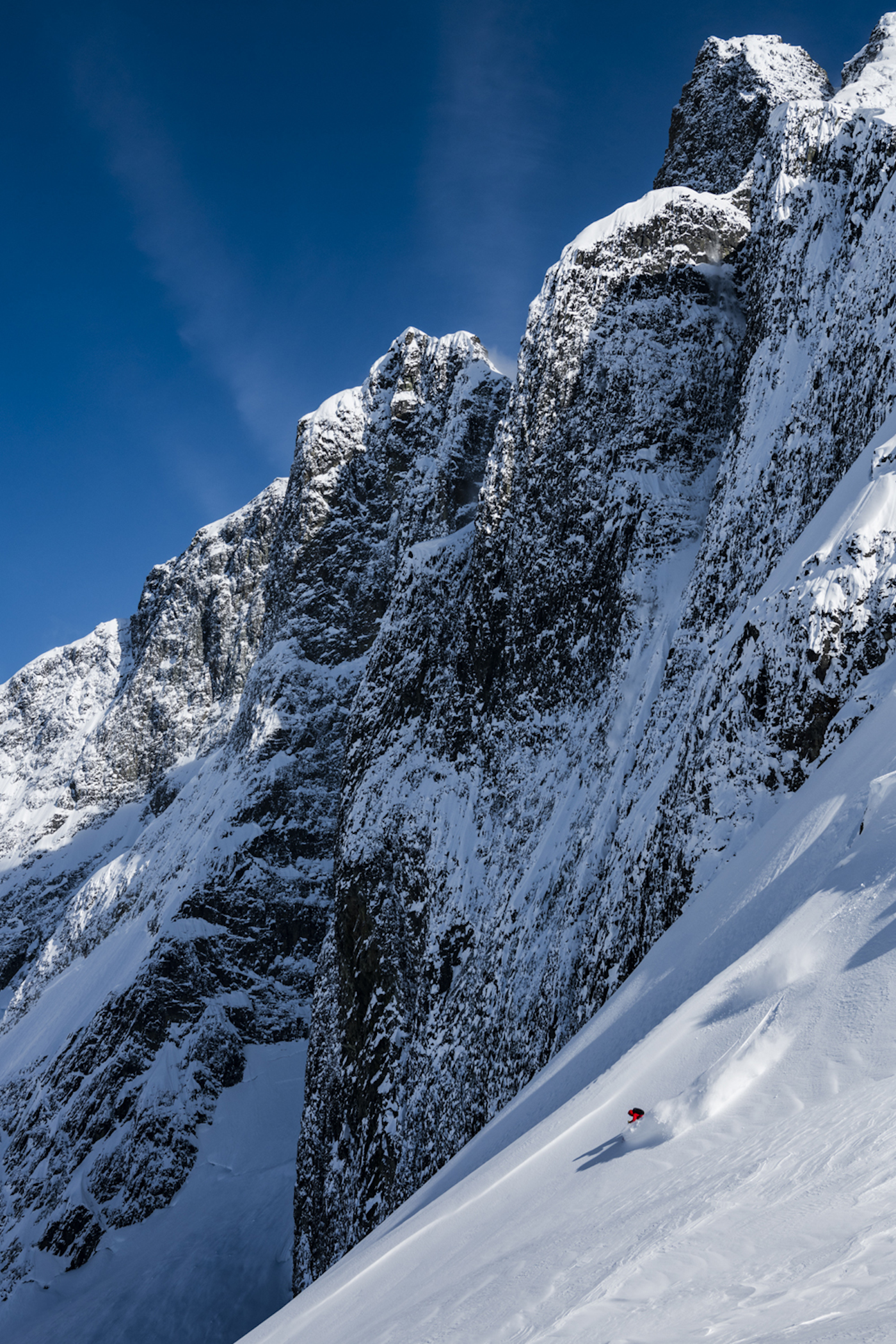
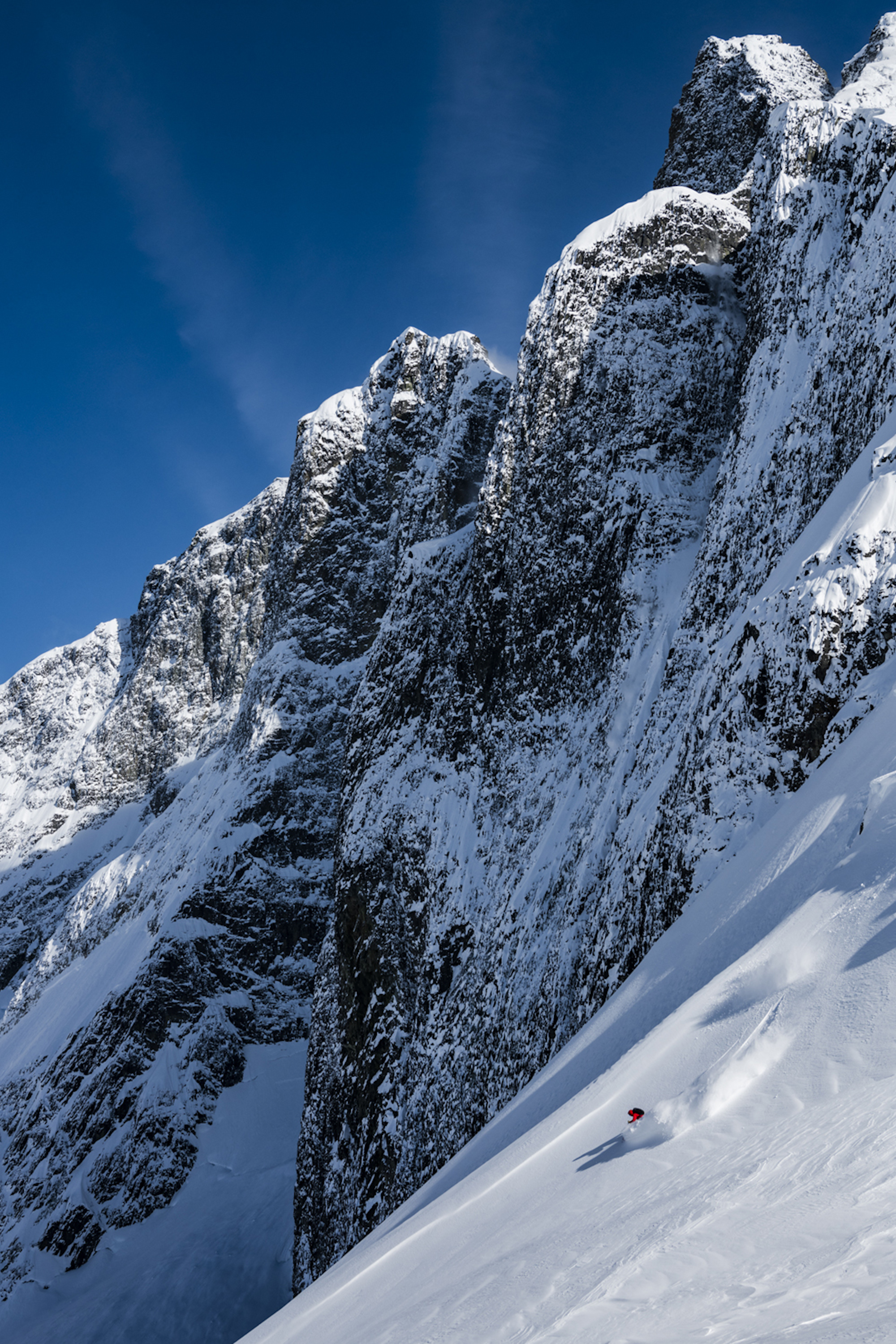
SKIER: Chad Sayers
With so much attention, of course, came the worry that someone might swoop in and push them out, so to protect their turf, the boys reluctantly applied for an official heli-ski tenure, vaulting the dirtbag ski entrepreneurs into the world of serious business.
Their fears were justified. Before it even opened, BCHS was competing for tenure with another unscrupulous operator who had copied their public tenure filing. In The Swede’s estimation, they had only one choice: put all their resources into winning. They eventually prevailed, but having tapped their finances during the fight, they had to rely on their first clients’ deposits to buy key equipment like shovels and probes and transceivers. Then came an unexpected hurdle. After three winters of working in massive snows with athletes and film crews, their first commercial season was the boniest on record.
The snow may have been disappointing that season, but the clients who did show up were blown away by the terrain. It would be a slow and steady climb, but by 2018, BCHS would be known the world over as the ultimate bucket-list heli-ski destination, boasting four unique bases in some of the Coast Range’s remotest mountains.
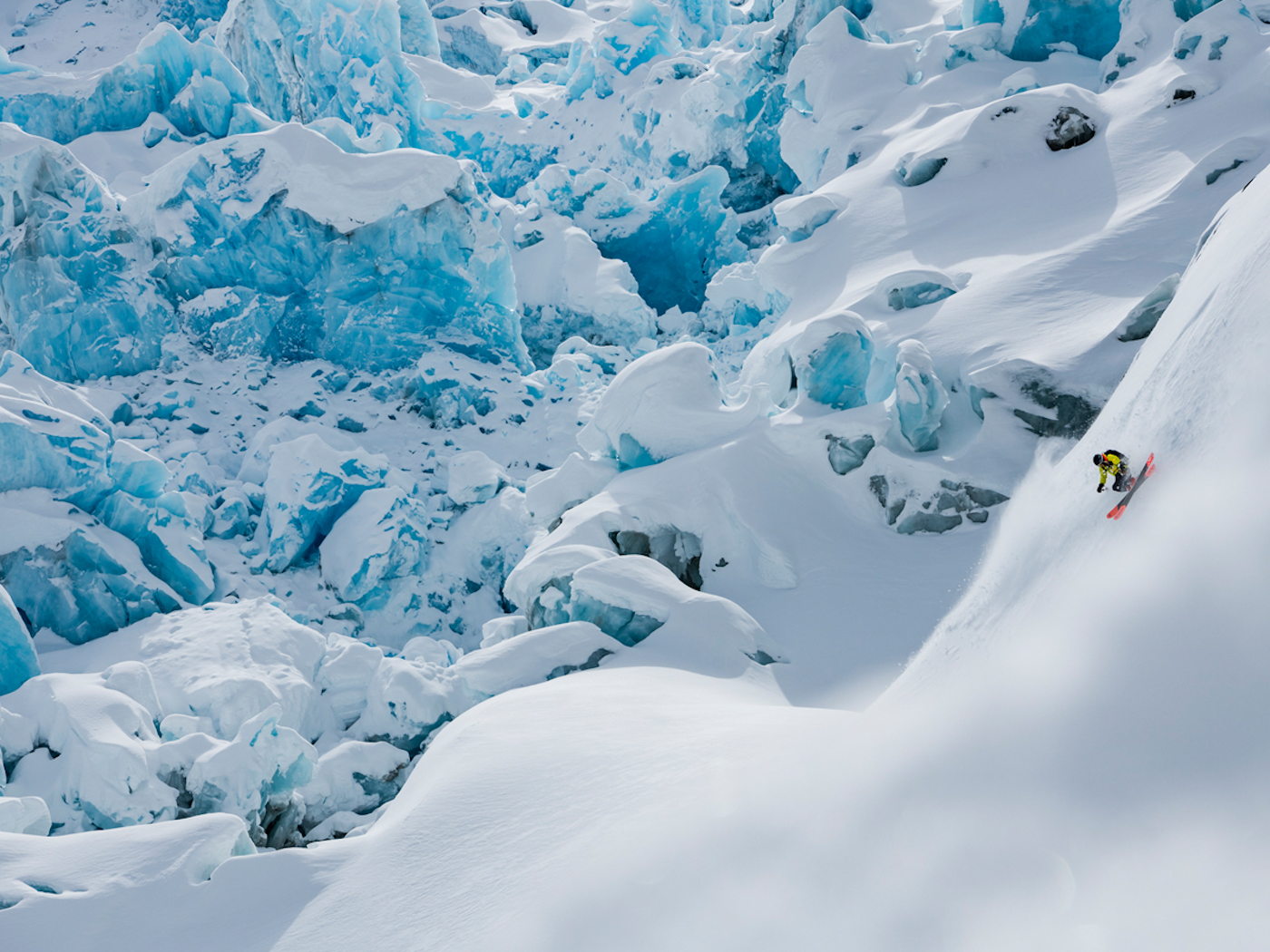
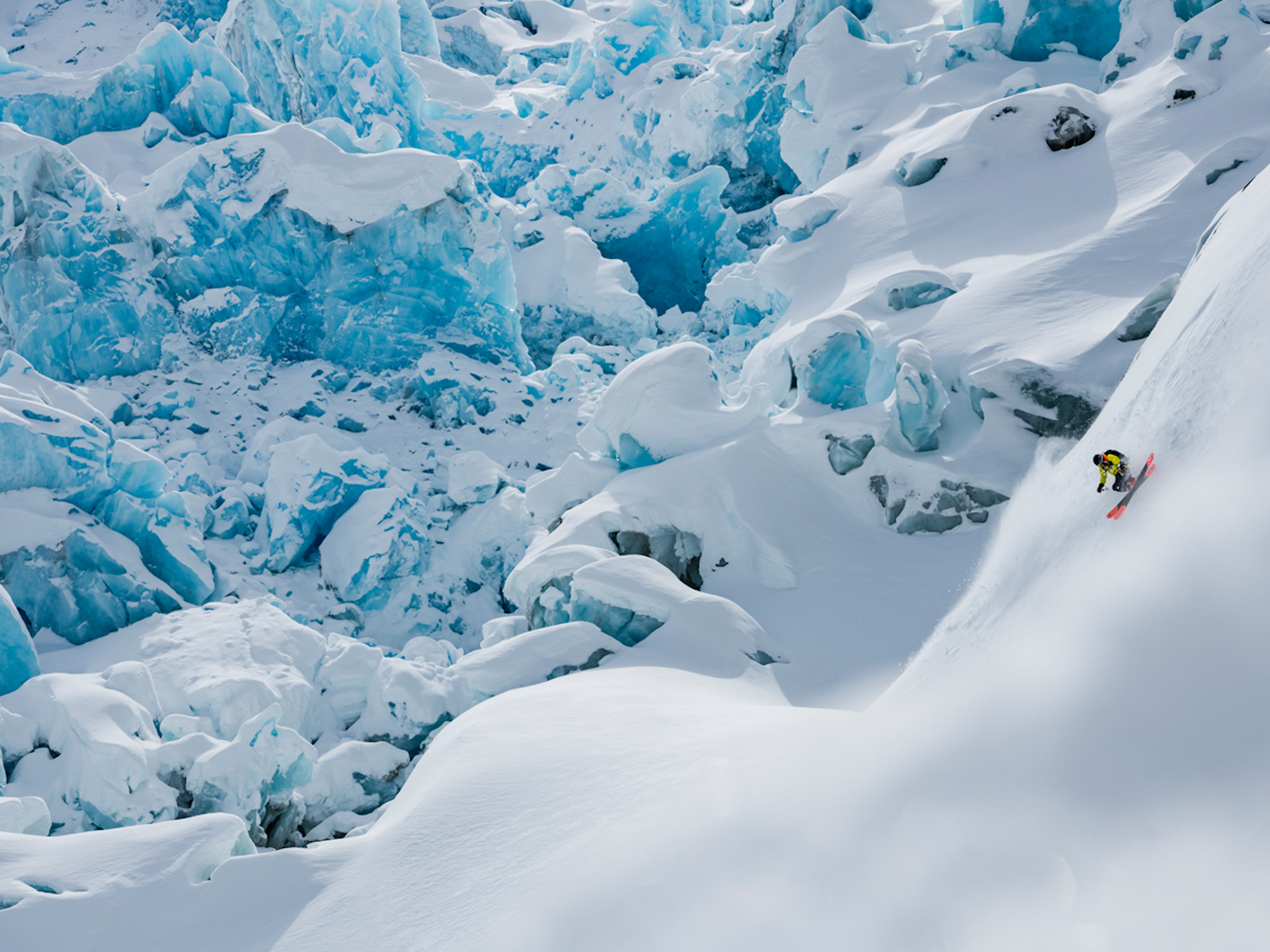
SKIER: Marcus Caston
“You couldn’t drag tourists here in the summer, and suddenly we’re bringing in all sorts of people in the winter,” recalls The Swede. “No one in town really knew what was actually going on above treeline because none of them had ever been up there, and so what we were doing was a bit mysterious. When skiers first started walking around town, nobody knew what to make of it. But now we’re the biggest employer in the valley—bigger than the hospital.”
However true that comparison may be, BCHS’ current count of 70 employees—30 of them guides—doesn’t even include contract workers like pilots and engineers who keep the heli fleet moving.
As a destination, Bella Coola’s golden era had come early, starting before the business was fully operational and lasting some seven years. It wasn’t just the stark, incomparable peaks, ice caps, glaciers and massive descents that made it unique among the world’s heli-ski operations; there was the deep history and culture of the valley’s Nuxalk First Nations, known for their mask-carving mastery; there was the excellent year-round fishing on nearby rivers; and there was abundant wildlife, including eagles, moose and grizzly bears that could draw tourists to Tweedsmuir Park Lodge outside of ski season.
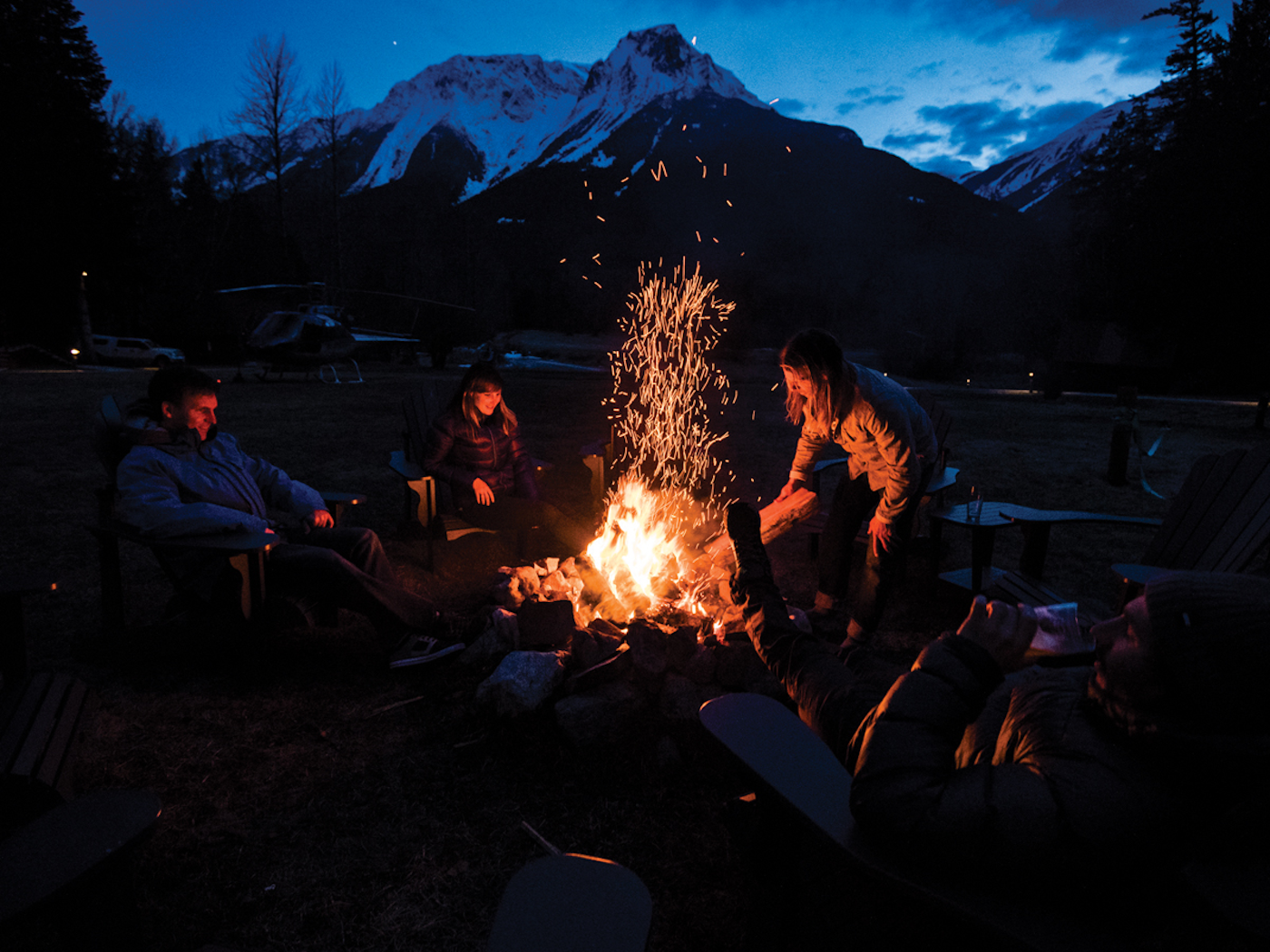
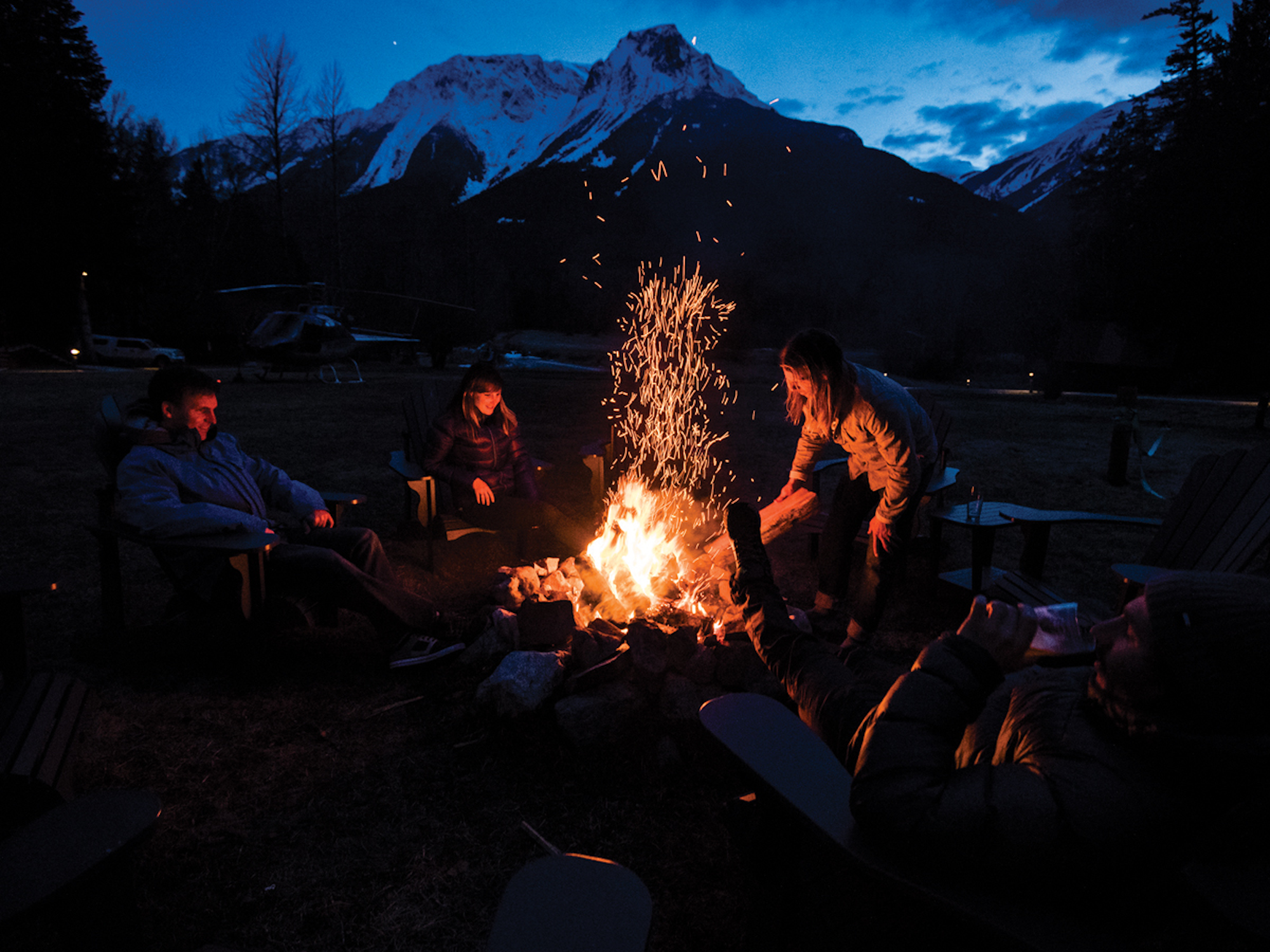
During these seven years, the prodigious imagery output from BCHS created an aspirational black hole that sucked at the entire global snow sports industry. Film segments by the likes of Seth Morrison, Hugo Harrisson and Mark Abma made history. Shane McConkey invented and tested his revolutionary reverse-camber fat ski here. It got crazy enough that the boys had to consciously back off filming to work on developing a viable and lasting business. The musty, kitsch-filled lodge was renovated and modernized to be the central hub of a base constellated with comfortable new guest cabins, an outdoor hot tub, a sauna, a fitness room and a fire pit. Culinary and wine offerings—which had always been top grade—went off the charts into the five-star range. They opened more exclusive, small-group bases elsewhere: Pantheon Heli Ranch; the even more exclusive Mystery Mountain Lodge, accommodating only four plus a private chef; and Eagle Lodge, a renovated hotel that housed 12 skiers closer to town.
And then, just as they thought they were finally getting good at what they did, someone decided they were the best.
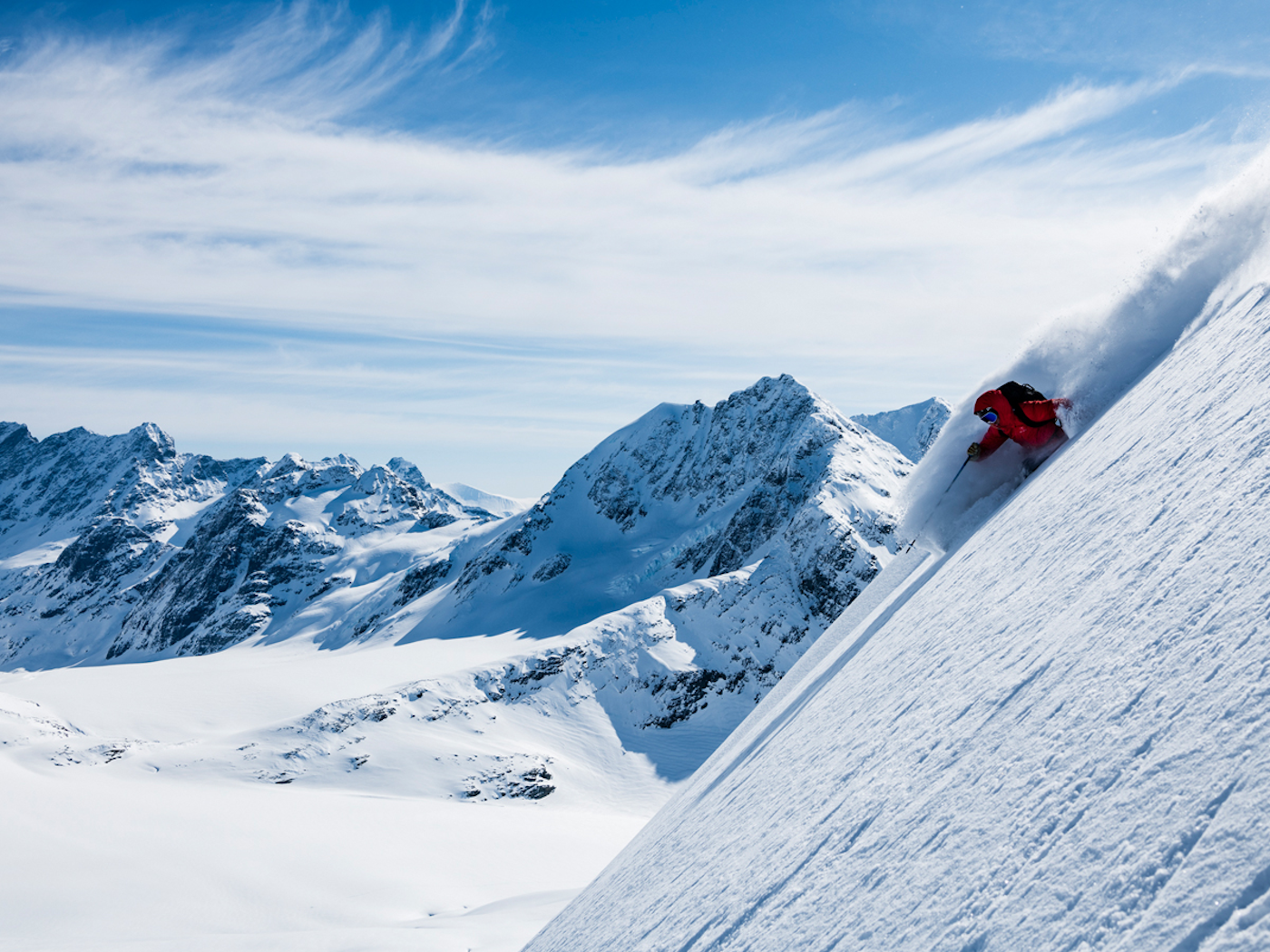
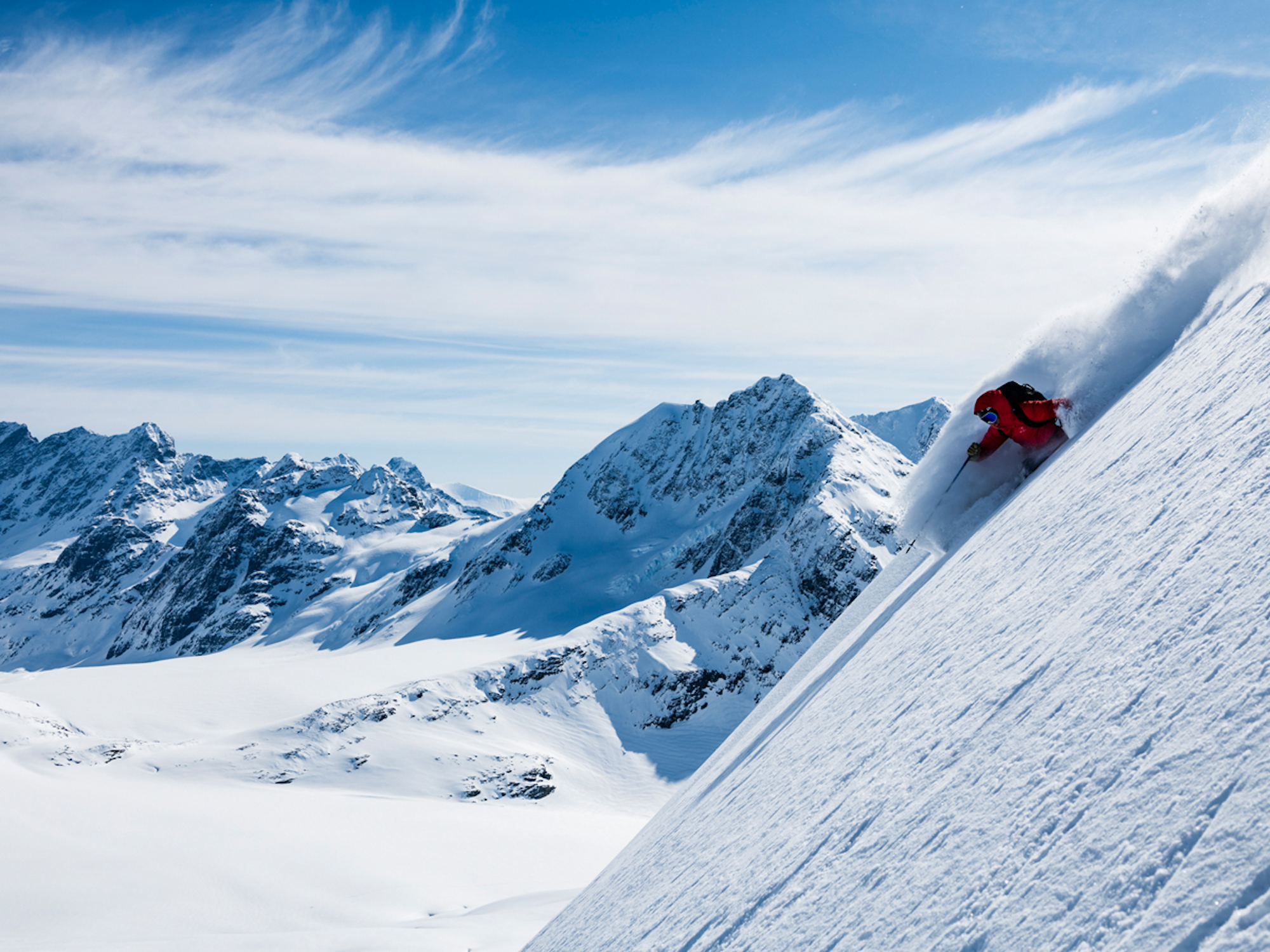
SKIER: Chad Sayers
The next day, another spring storm pins us down, but it still feels like a vacation. There are card games and pool matches, movies, fishing and mountain biking in the lush valley. Frisbee golf, archery, hot tubbing and hilarity. A few make trips to the village to look at totem poles and make hikes to the startling petroglyphs of Thorsen Creek that once convinced explorer Thor Heyerdahl to theorize the figures depicted were of Polynesian origin.
For those of us who remain in the lodge, Begin holds forth on the revolutionary nature of BCHS’ A-Star B2 helicopter program. The A-Stars carry four to five guests and a guide as opposed to the heli industry standard of 12. “We saw small-group heli-skiing as the future,” he remembers. “But it was pilot Richard LaPointe—who flew all the early movie crews—who helped redefine heli-skiing so that the AStar is now the high-end standard in the heli-ski business.”
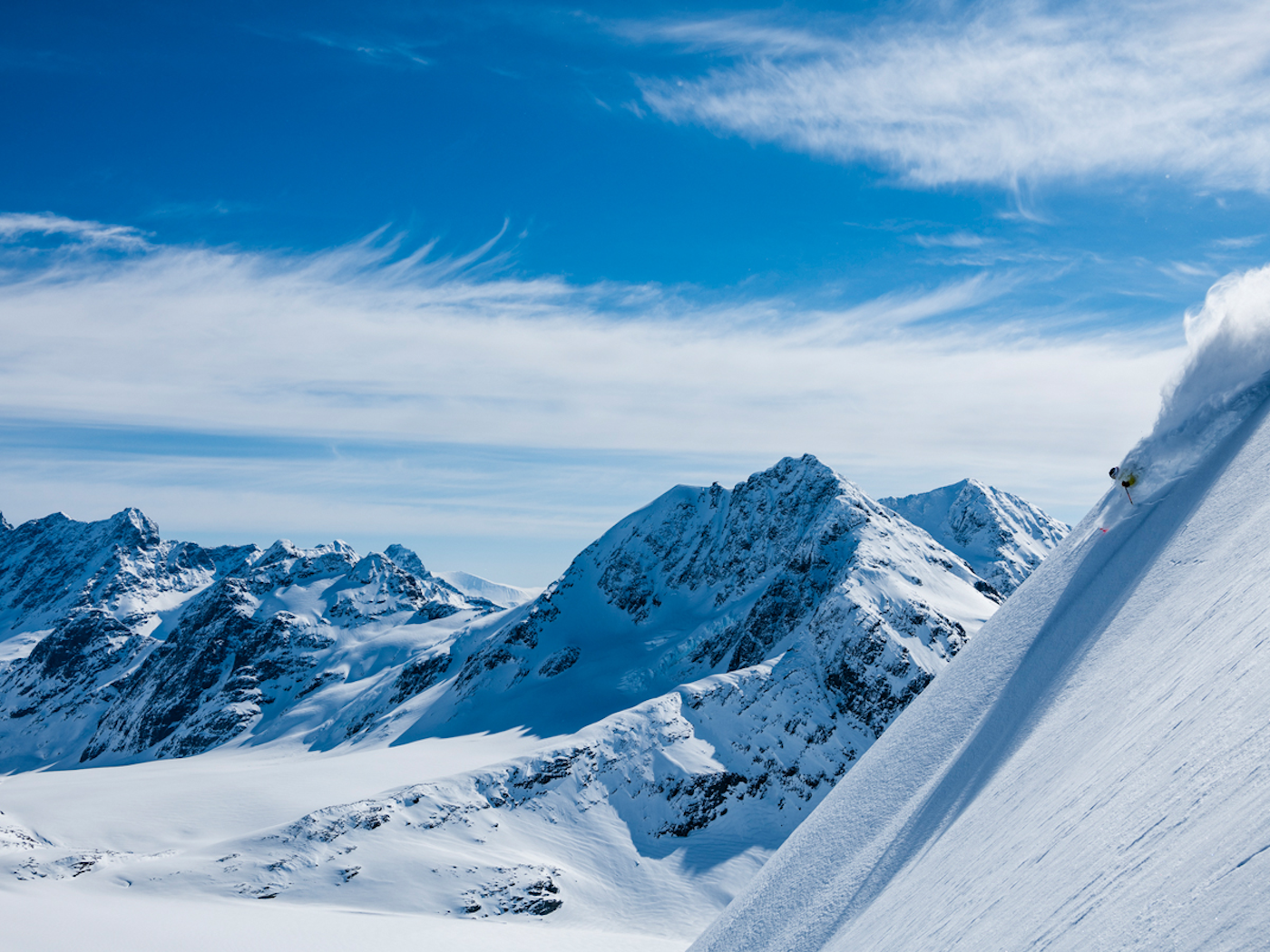
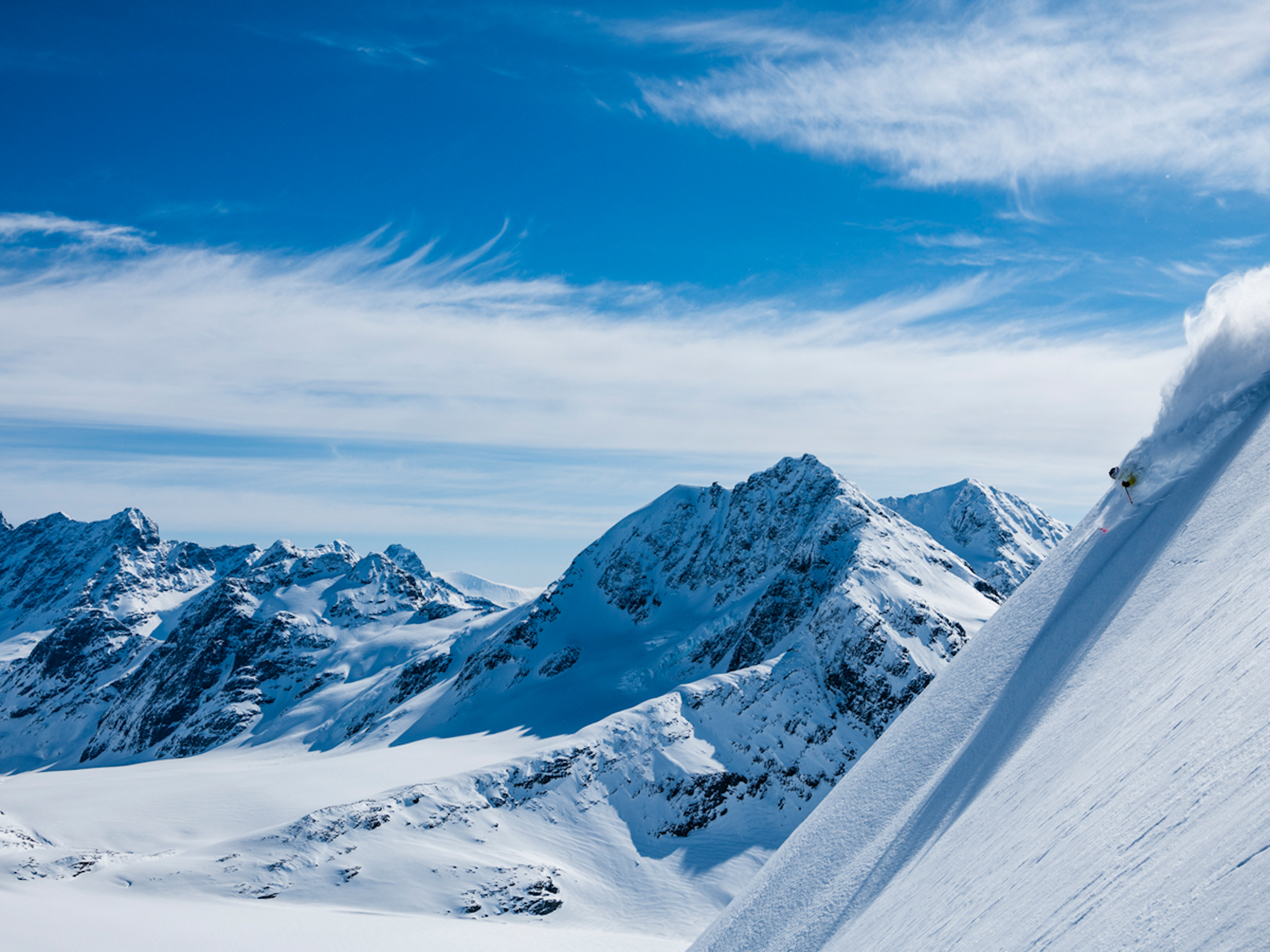
SKIER: Marcus Caston
Featured Gear:
Blizzard Rustler 11 — $840
The Rustler is a powder plunderer, plain and simple. Its 114 mm waist (@ 188 cm) and rockered tip and tail allow it to plane through and surf the deepest snow imaginable. On the flip side, camber underfoot, specially shaped Titanal and carbon in the tip and tail strengthen this puppy up for easy hold on the hardpack.


On our final morning, the storm is dissipating, but there’s no clear forecast or obvious route to chase the clouds, and it becomes a study in patience. We don’t get out until about 10:30 a.m., but when we start on the usual pillows, we can’t help but notice that they’ve been fluffed up with 60 centimeters of new.
After a couple of fun runs in the lower reaches, we have to wait by a river for some clear weather. When it comes, we head back up and hit film-famous gems like Maya and Morrison Shoulder. We ski big glaciers well into the afternoon, then make a final bump out to a zone called Cloudbreak, where the day’s great skiing suddenly turns unbelievable. The snow here is deep, cold and so intoxicating that we ski until the horizon flames crimson and the helis stampede back to base through a labyrinth of steep, alpenglow valleys.
In the end, it turns out to be one of the best ski days of my life. And although that doesn’t automatically qualify BCHS as the world’s best heli-ski destination, yet another transcendental day in these historic, incomparable mountains goes pretty far towards getting my vote.

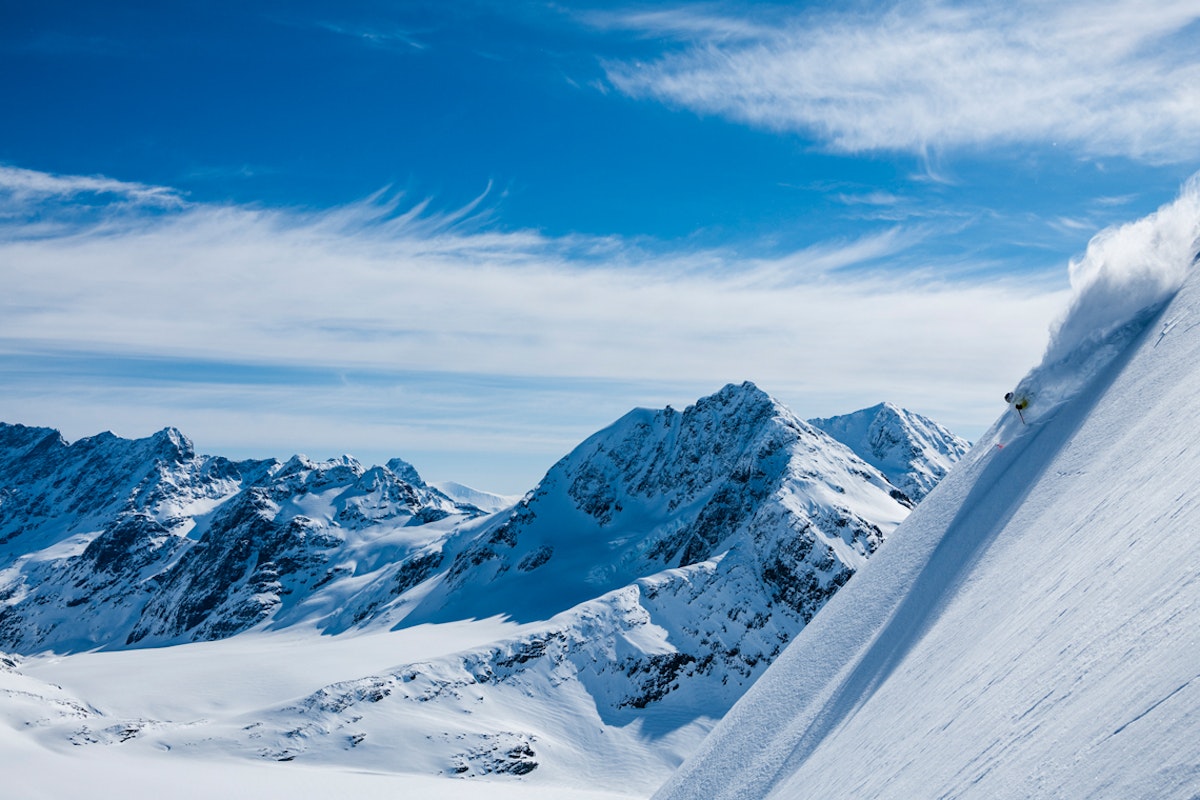


![[GIVEAWAY] Win a Head-to-Toe Ski Setup from IFSA](https://www.datocms-assets.com/163516/1765920344-ifsa.jpg?w=200&h=200&fit=crop)

![[GIVEAWAY] Win a Legendary Ski Trip with Icelantic's Road to the Rocks](https://www.datocms-assets.com/163516/1765233064-r2r26_freeskier_leaderboard1.jpg?auto=format&w=400&h=300&fit=crop&crop=faces,entropy)
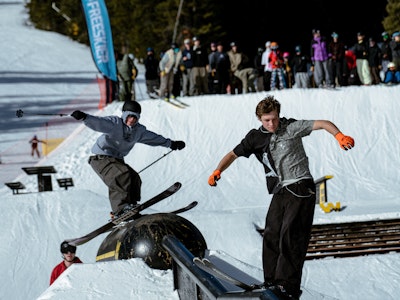




![[GIVEAWAY] Win a Head-to-Toe Ski Setup from IFSA](https://www.datocms-assets.com/163516/1765920344-ifsa.jpg?auto=format&w=400&h=300&fit=crop&crop=faces,entropy)

